
Interview
Interview with Beatriz Sokol (or Rompeolas)
by Sofía Ortiz
Reading time
7 min
When I met with Beatriz in a café in Colonia Juárez, twelve enormous days ago, the first thing we did was greet each other, only then to feel insecure about having done so. I washed my hands three times in the hour and a half we were sitting there. In total, we made four references to the emerging threat. Now, in listening to the recording, I feel a small electric discharge upon recalling that in times b.p.—before the pandemic—something monumental had just taken place: the women’s march on March 8. Beatriz had been taking photos at the march, at the fountain where the Paseo de la Reforma ends.
I ask her if taking documentary photos removes her from the “moment.”
Beatriz Sokol — I was taking photos for myself. I have a hard time going to those places and not carrying a camera. On purpose I went there as an observer, not with a slogan, but in order to encounter other discourses.
She sees herself seeing. Although self-reference is a gesture typical of any artistic medium, the phenomenon of observing oneself observing is particularly notable in Beatriz’s work. On the one hand, the camera reinforces the act of seeing—to press click is to make a decision about what you focus on and what you leave out; a photo is a stance before reality. On the other hand, Beatriz seems committed to excavating herself, perhaps suffering from, perhaps reveling in, an acute self-awareness. Throughout our conversation, I’m momentarily struck by imagining her as an astral projection watching her own body from without.
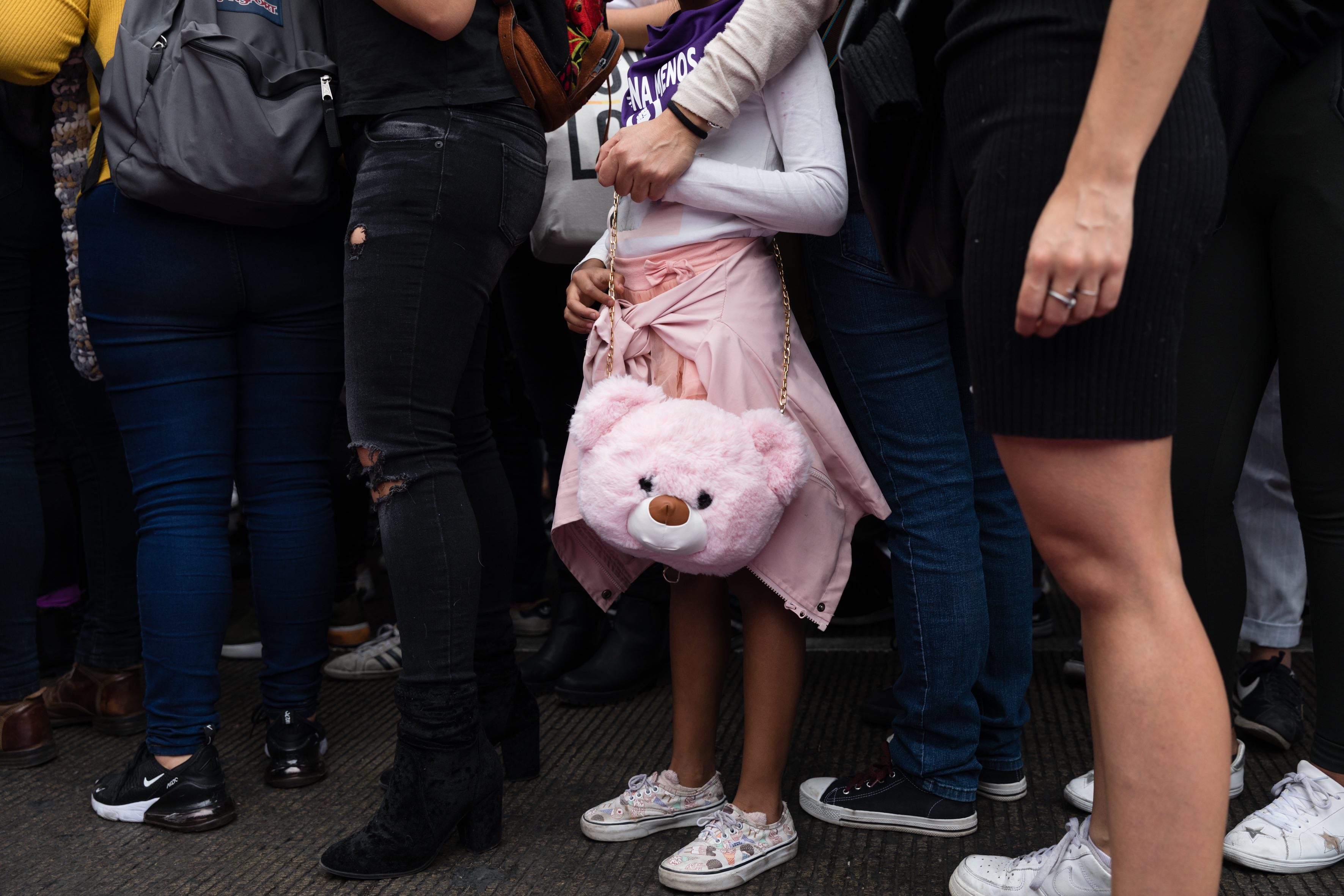
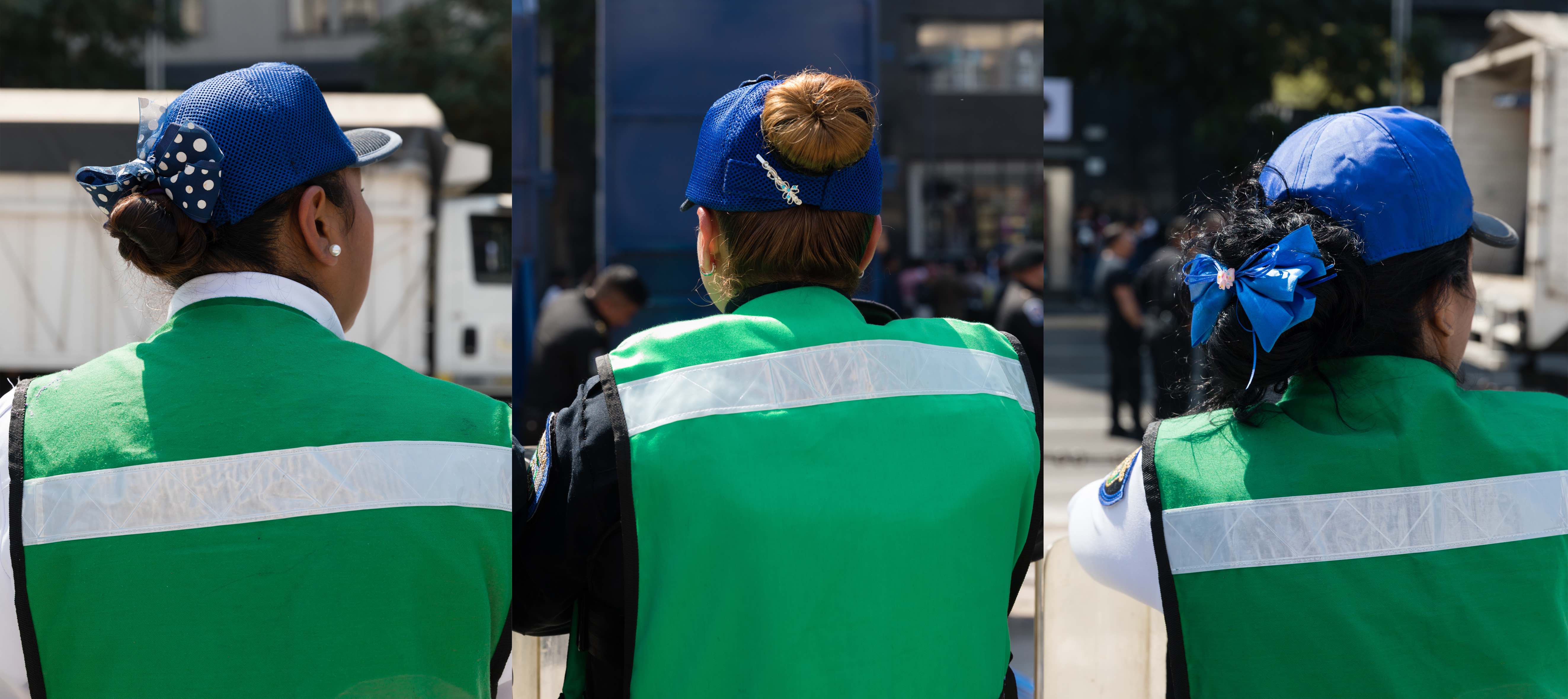
Now, and for the past year, she has been working on a photobook. “It’s called Sucia [‘Dirty’],” she tells me. The photobook was born from a text she wrote about her sexual upbringing: an autobiographical revisionism, the same many of us have carried out since #metoo. In it she combines photos that would smell, if that were possible, of gum, sweat, and rubber. Beatriz has been working for a while on the theme of sexuality. I ask her why, and I realize that her answer has been in formation for years, as always happens with themes that entrap us.
B.S. — Sexuality has been a difficult theme in my life. I’ve greatly admired people who’ve had a kind of freedom with their sexuality…who’ve felt more free than I have. I decided to look for these types of people so they’d let me portray them in their privacy. I also wanted to tear down prejudices, including my own, and to get closer to other ways of seeing sexuality. If they were to teach it to us in another way, certain forms of violence wouldn’t exist.
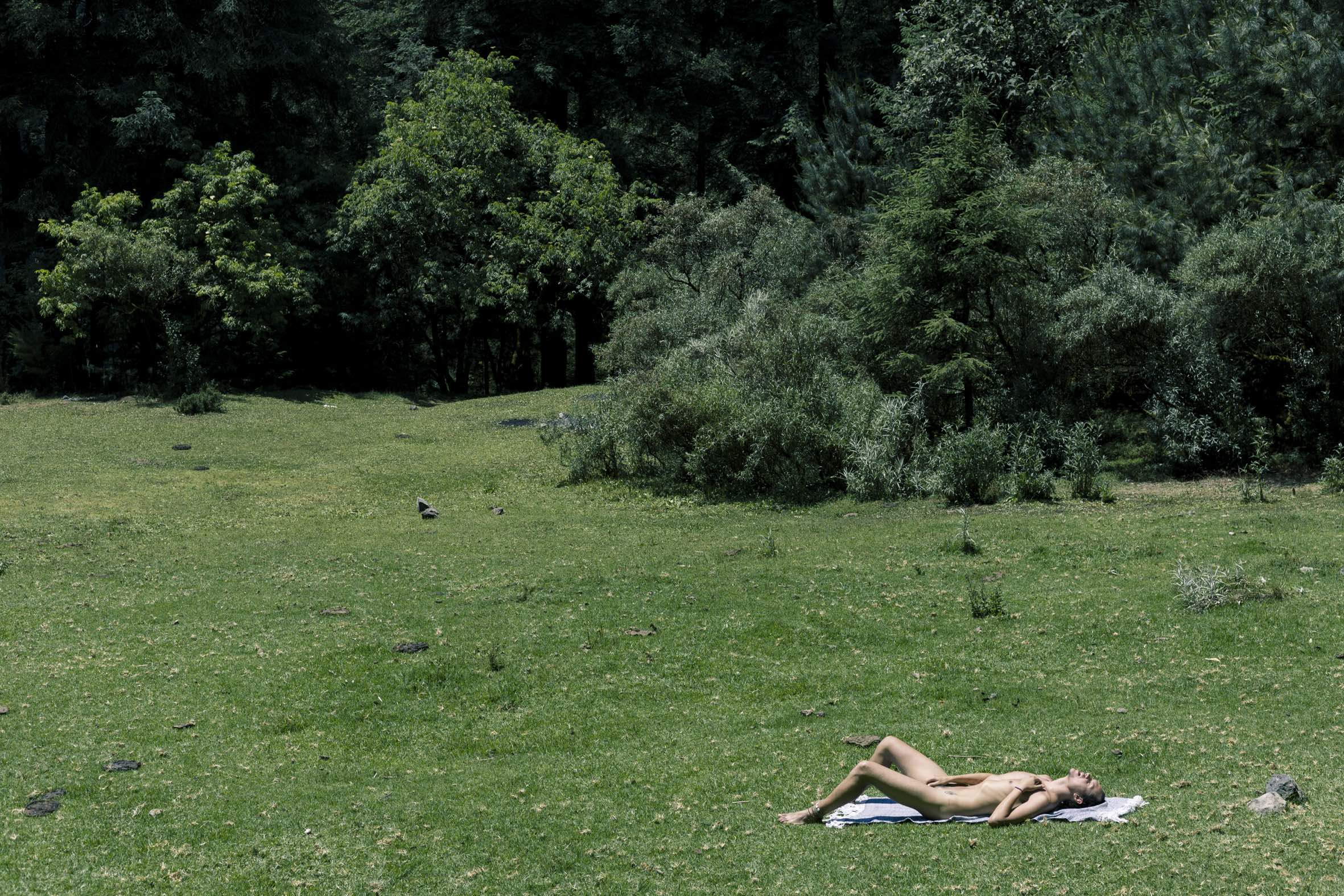
In this search, Beatriz photographed people in the bathroom, masturbating, fucking. She met sex workers and digital influencers. She got closer to rituals of personal care. She accessed private bedrooms, hotel rooms, and even an ecosexual ritual in Los Dinamos National Park.
B.S. — At that time (this happened about three years ago) I didn’t understand what I wanted to say, and obviously my photos spoke of my fear. At first, I kept taking photos in corners, then I got closer. I would say to them, tell me what you want to do, and I’ll fit in with it. I had no control over anything, but it turned out that I didn’t like my photos. I had this false idea that, in making a documentary photo, I couldn’t intervene.
In this moment Beatriz gives a start and begins talking about gender (“género”), rapidly and effusively. At first I think she’s referring to constructed gender, Judith Butler-style, but then I realize that she’s in fact talking about photo genres (“géneros”): photojournalism, fashion photography, documentary photos. Aha! Here we both have a lot to say. About how categories are meaningful, but also fucked up. “You have to have firm ground to stand on, though you also have to understand that you can move,” she tells me. We talk about how to avoid feeling bound-in by a style, about the barriers that we impose on ourselves in defining ourselves as this or that. It’s not for nothing that God left the task of naming the animals to Adam.
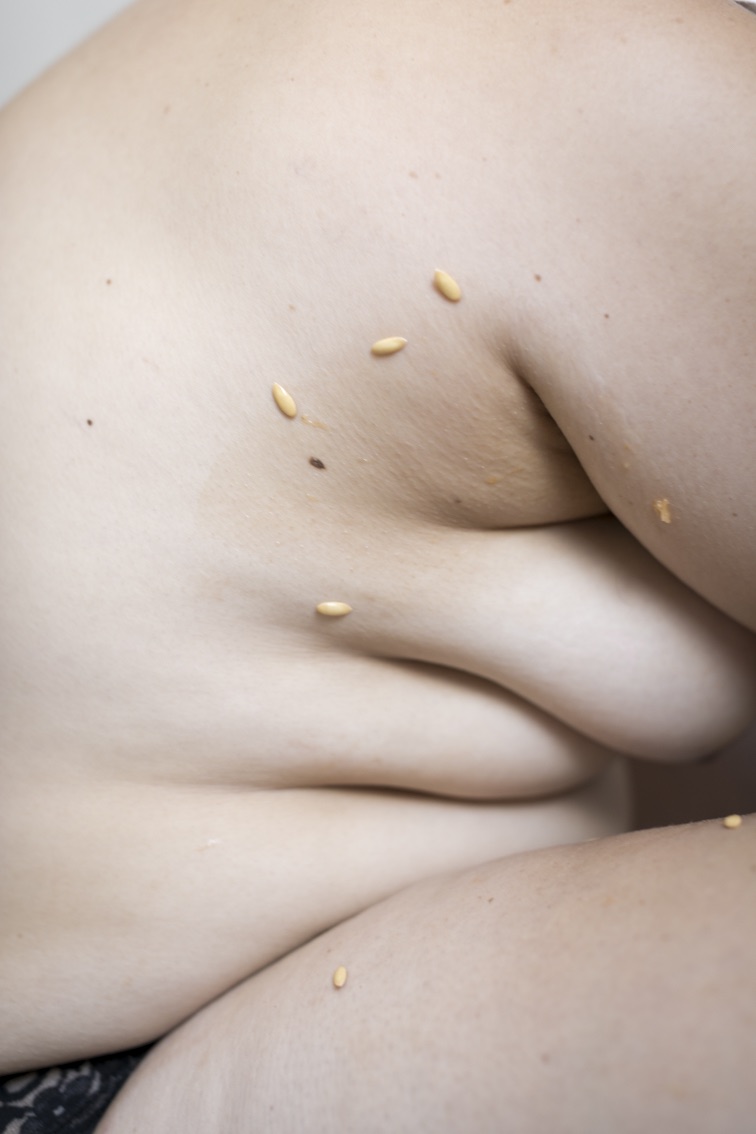
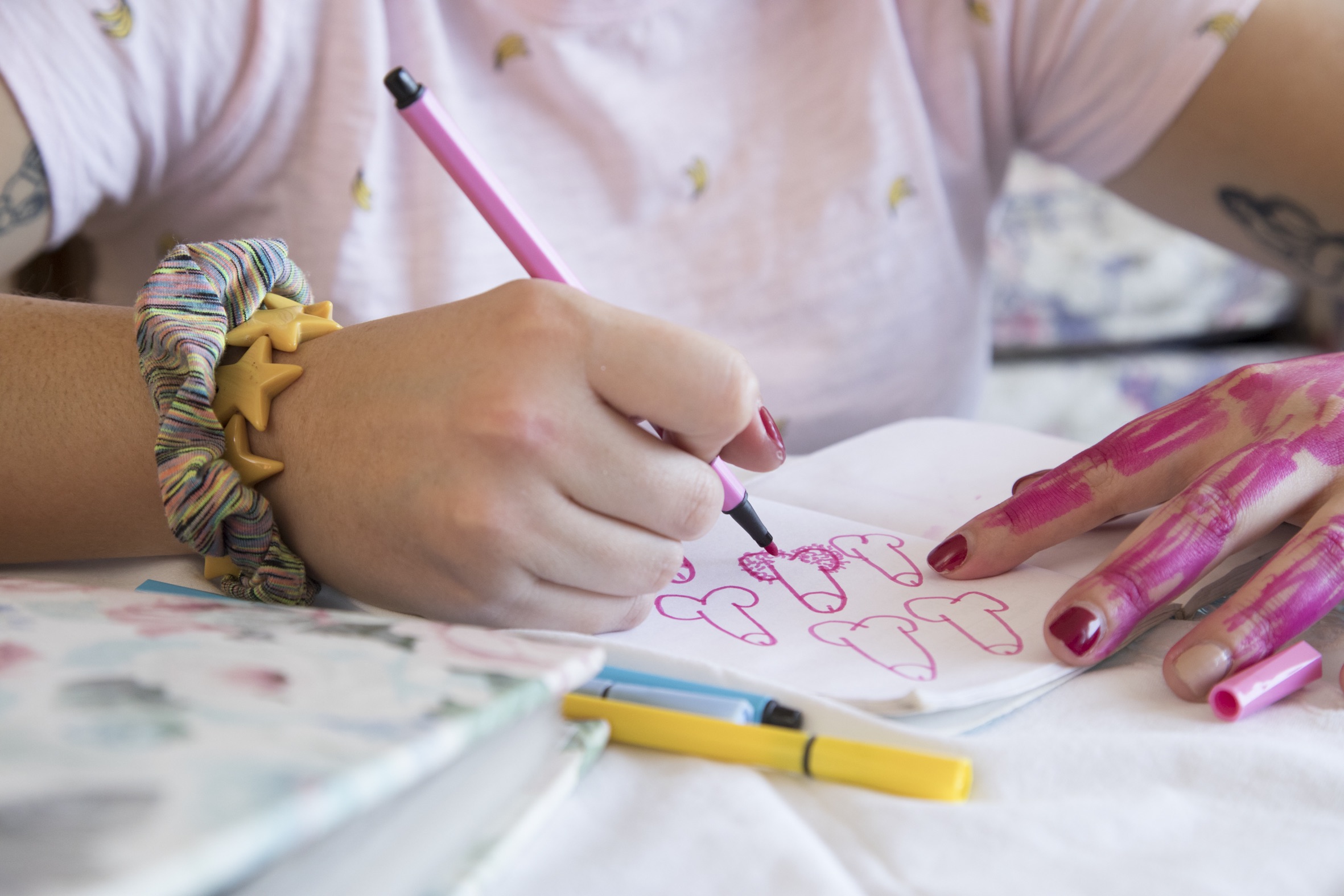
Beatriz began her career wanting to be a journalist. However, as has happened to many of us, in a vulnerable (read: youthful) moment, she came up against an asshole teacher who made her feel useless as a writer. She started working in film production, but the set culture didn’t allow her a world beyond the crew call. “I realized that for me it was photos.” She ended up in fashion photography, with which she has maintained an “it’s complicated” relationship until today.
B.S. — Fashion photography asks for perfection since in the end you’re selling something, an exaggeration of reality. I started to get obsessed, looking for perfection even in the photos I would look for in the outside world, although that also helped me a lot in building up my knowledge of photography and technique.
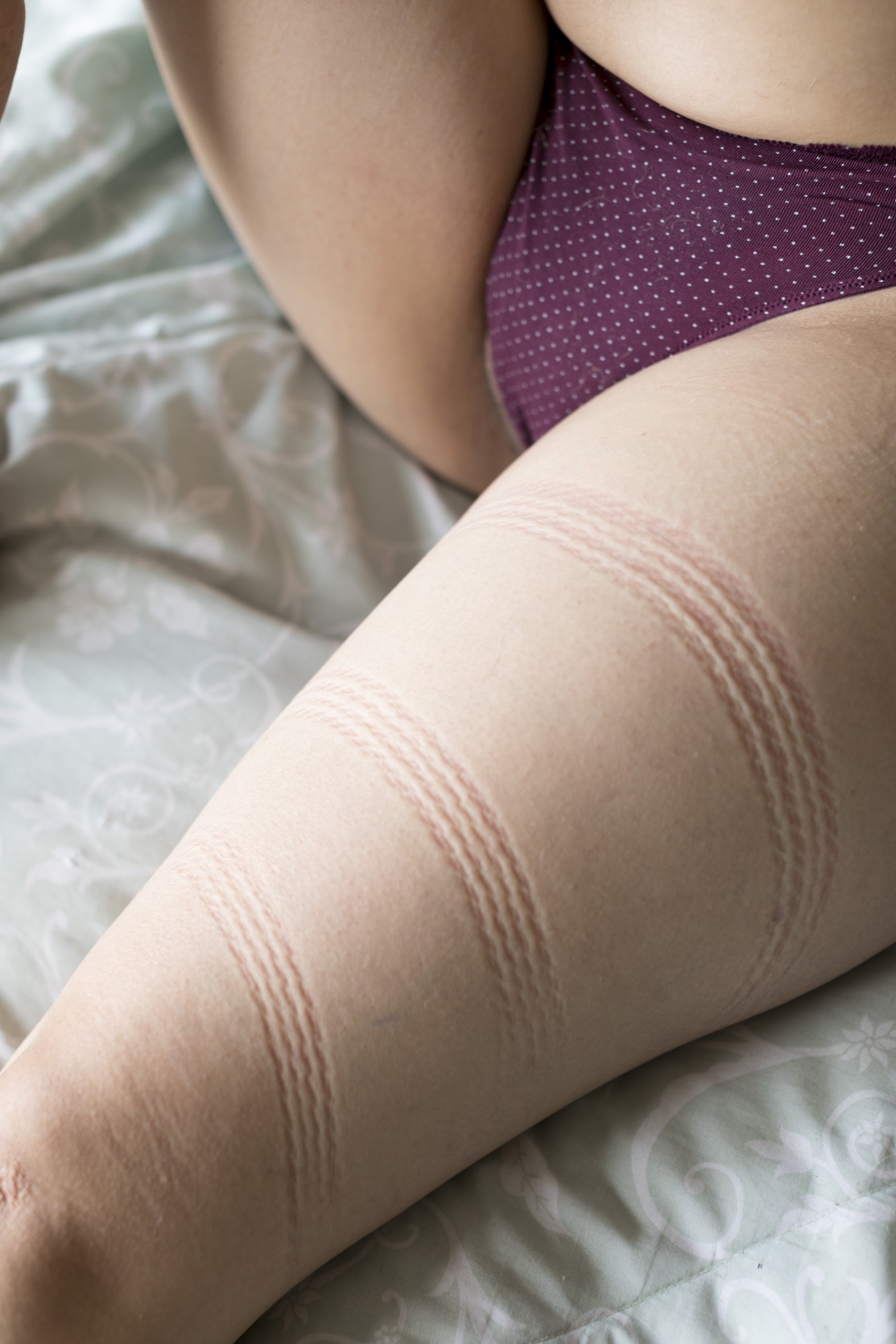
She tells me about the moment when the photobook exploded. In the context of a workshop, she had to write her first memory, and she decided to write her first sexual memory, like Eve first realizing her nakedness. She was a girl, she was in the tub, her grandmother would bathe her while telling her stories of royal marriages with happy endings. She would wrap her in a towel and carry her like a bride: “I realized that I felt uncomfortable…”. A naked girl in the arms of her grandmother prince. “I wrote a very powerful text that became the skeleton of the project.”
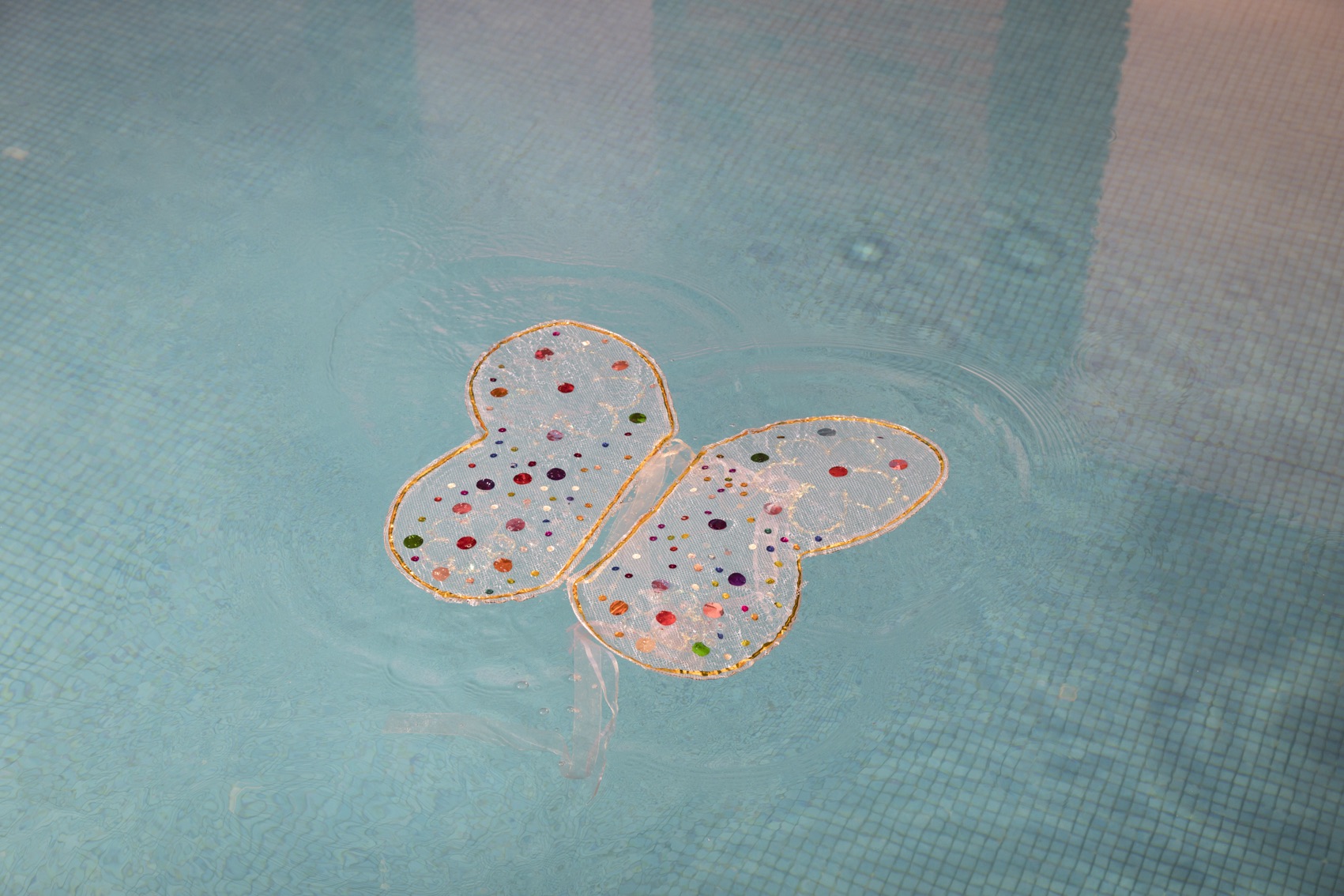
She shows me the photos on her computer. Most of them are carefully controlled, having a lot to do with her fashion work. Some are documentaries, vestiges of previous works. Others are precisely constructed scenes: friends getting ready for a closeup while covered in crinolines and viscous liquids.
B.S. — Where’s the genre of these photos? When I stopped thinking about genre I started creating something more free.
I ask her, Why do you make them so pretty? The photos are smooth, without shadows, and in Pop! palettes, like 90s toys.
B.S. — I want them to contrast with the text I wrote. My memories are aesthetically pretty, but in the background there’s something saying that this image isn’t pretty even if it’s dressed in pink…and, well, the photos are like that: tacky, pretty, uncomfortable. They’re sensations evoked by memories, rather than a literal representation.

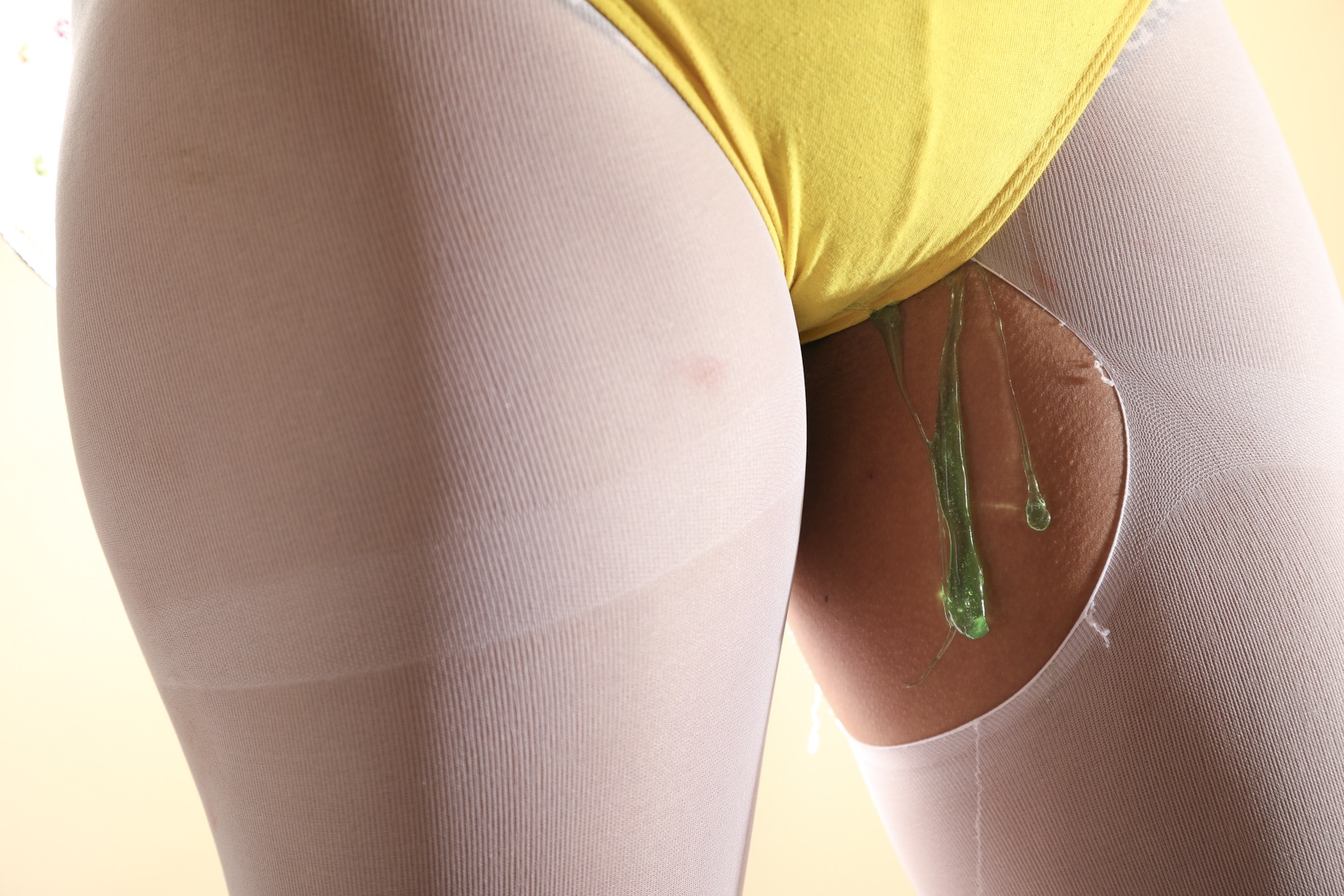
I turn off the recording and we continue talking a bit more. I notice that Beatriz is uncomfortable and I ask what’s wrong. She doesn’t know, but I think we’re both feeling the same: open to the general anxiety in the environment, like oysters filtering microplastics in the sea. It’ll take a while longer for the book to come out, she tells me. We part ways with the promise of seeing each other again on the other side.
Published on April 2 2020